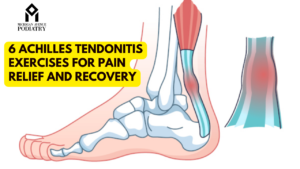Gout, a form of inflammatory arthritis, has emerged as a prevalent health concern affecting millions worldwide. Understanding the nuances of this condition is paramount for effective management and prevention. In this comprehensive guide, we delve into the multifaceted aspects of gout, encompassing symptoms, treatment modalities, causative factors, and preventive measures.
Understanding What is Gout: Symptoms, Treatment, Causes
Unveiling Gout Symptoms
Gout manifests through a myriad of symptoms, often striking suddenly and with intensity. The hallmark sign is excruciating joint pain, typically in the big toe, accompanied by swelling, redness, and warmth. As the condition progresses, recurrent gout attacks may ensue, affecting multiple joints and severely impeding mobility.
Exploring Gout Treatment Options
Effective management of gout hinges upon timely intervention and tailored treatment approaches. Nonsteroidal anti-inflammatory drugs (NSAIDs), corticosteroids, and colchicine serve as frontline medications to alleviate pain and inflammation during acute gout episodes. Long-term management entails the use of urate-lowering medications to regulate uric acid levels and prevent recurrent attacks.
Understanding the Root Causes of Gout
Gout stems from the buildup of uric acid crystals in the joints, precipitated by hyperuricemia—a condition characterized by elevated uric acid levels in the blood. Various factors contribute to the development of gout, including genetics, dietary choices, obesity, and certain medical conditions such as hypertension and kidney disease.
Unraveling Foods That Trigger Gout
Dietary habits play a pivotal role in gout management, with certain foods exacerbating symptoms and precipitating gout attacks. High-purine foods, such as red meat, seafood, organ meats, and sugary beverages, can elevate uric acid levels, fueling the progression of gout. Limiting consumption of these trigger foods is paramount for mitigating gout symptoms and preventing flare-ups.
Identifying Early-Stage Gout Symptoms
Early recognition of gout symptoms is instrumental in initiating prompt treatment and preventing disease progression. Beyond acute joint pain, subtle indicators of early-stage gout include occasional discomfort or stiffness in the affected joints, as well as persistent swelling or tenderness. Heightened awareness of these warning signs empowers individuals to seek timely medical evaluation and intervention.
Collaborating with a Podiatrist
Podiatrists play a pivotal role in the comprehensive management of gout, offering specialized expertise in foot care and musculoskeletal health. From diagnosing gout-related foot complications to providing tailored treatment regimens, podiatrists serve as invaluable allies in navigating the complexities of this debilitating condition. Regular podiatric consultations and foot examinations are indispensable for optimizing gout management and mitigating long-term complications.
Preventing Gout Flare-Ups
Preventive strategies are paramount in curbing the frequency and severity of gout attacks. Adopting a balanced diet rich in fruits, vegetables, whole grains, and low-fat dairy products can help regulate uric acid levels and minimize the risk of flare-ups. Furthermore, maintaining a healthy weight, staying hydrated, and avoiding excessive alcohol consumption are pivotal in gout prevention.
Conclusion: In conclusion, unraveling the intricacies of gout—from symptoms and treatment modalities to causative factors and prevention strategies—empowers individuals to take proactive steps towards optimal musculoskeletal health. By fostering awareness, embracing healthy lifestyle choices, and collaborating with healthcare professionals, individuals can effectively manage gout and enhance overall well-being.



